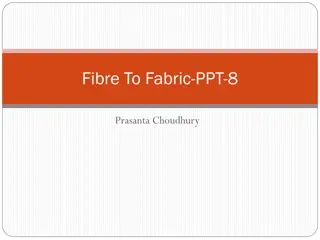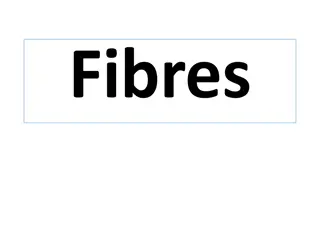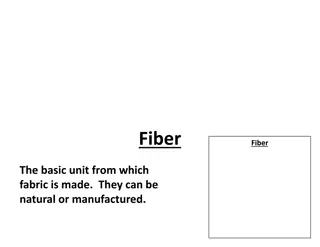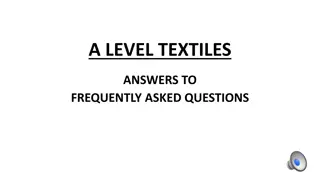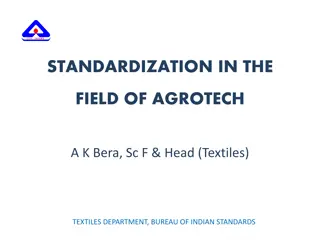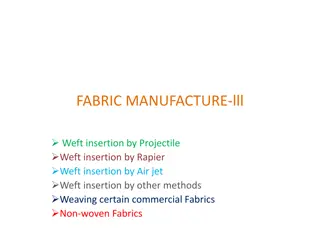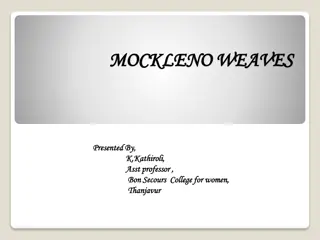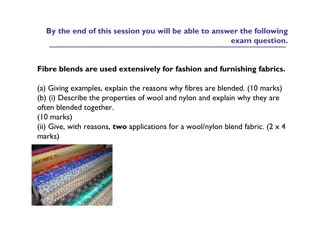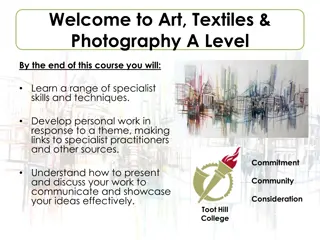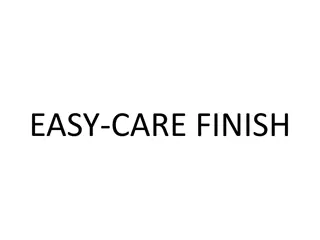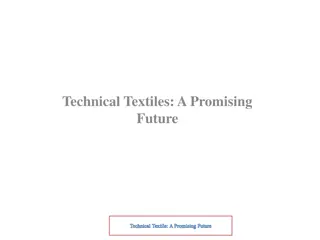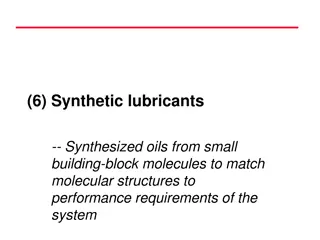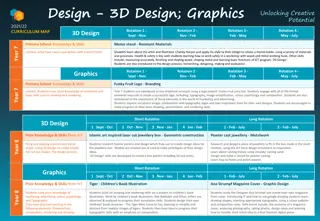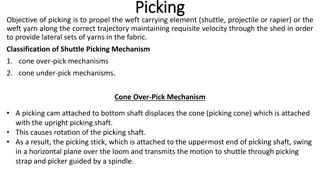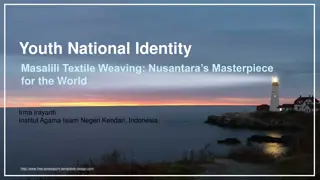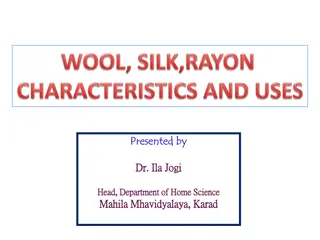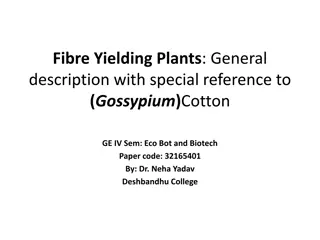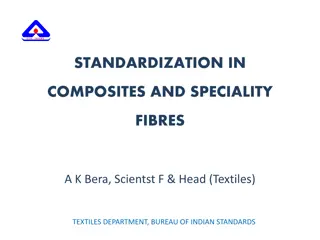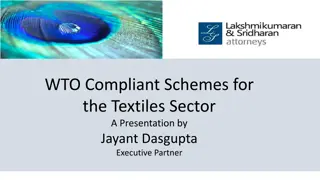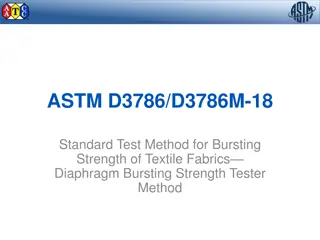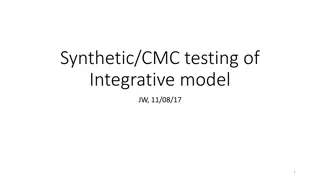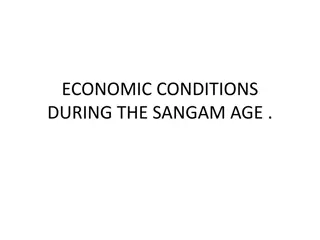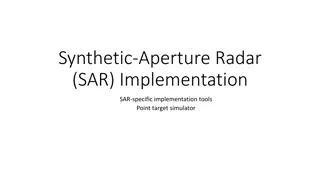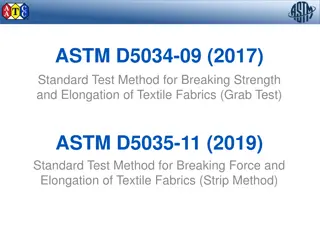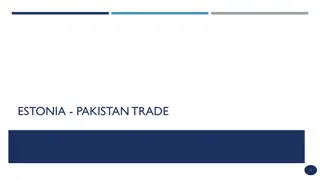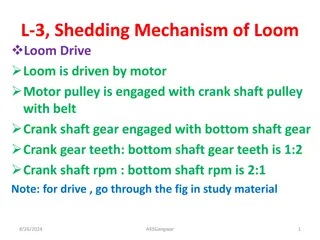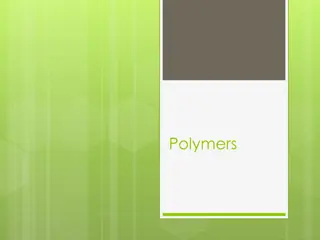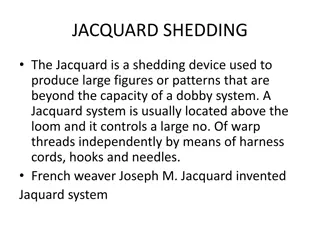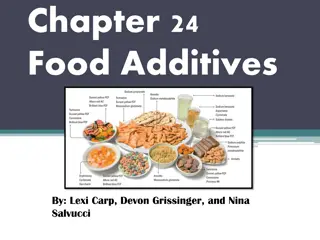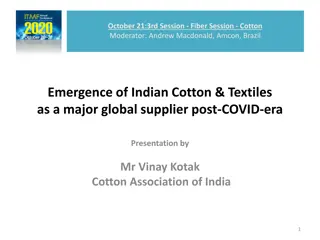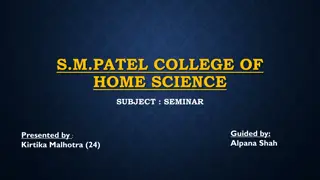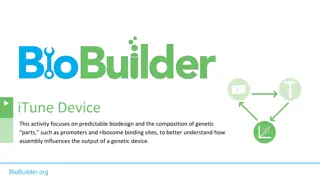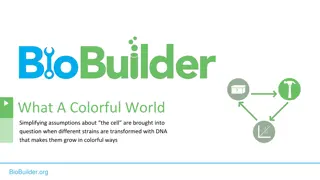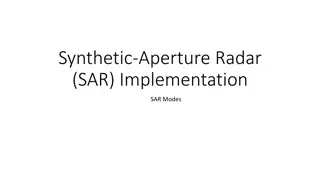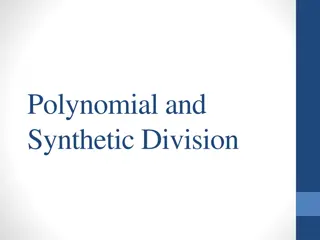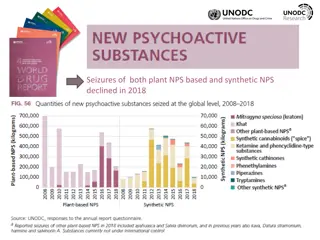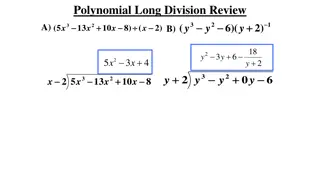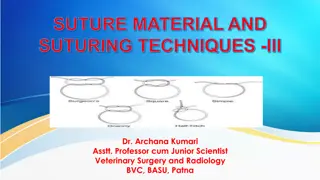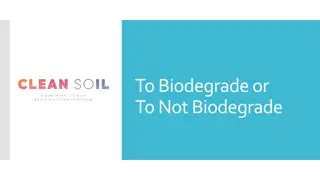Exploring Fibres and Fabrics: Natural vs. Synthetic, Weaving Techniques, and Non-Woven Textiles
Dive into the world of textiles with a focus on natural and synthetic fibres, weaving methods such as plain and twill weave, and non-woven textiles like felted wool. Discover the properties, characteristics, uses, advantages, and disadvantages of each type, including insights into animal and plant-based fibres. Explore the intricate techniques behind creating different types of fabrics and gain a deeper understanding of woven and knitted textiles.
Download Presentation

Please find below an Image/Link to download the presentation.
The content on the website is provided AS IS for your information and personal use only. It may not be sold, licensed, or shared on other websites without obtaining consent from the author. Download presentation by click this link. If you encounter any issues during the download, it is possible that the publisher has removed the file from their server.
E N D
Presentation Transcript
Core Knowledge 1.11 The categorisation of fibres and fabrics and textiles Name: Group: Teacher:
1.11 fabrics and fibres Pages 47-51 Textiles refers to all flexible fabrics created from fibres which are fine, hair like structures that can be made into fabrics by weaving, knitting or felting. Fibres are either natural or synthetic. What are the key terms? Explain what natural fibres are: Properties and characteristics How they could be used Advantages Disadvantages Animal origin Plant origin
1.11 fabrics and fibres Pages 47-51 Synthetic fibres are usually made using coal , oil and other petrol based checmicals. Examples include polyester, acrylic, polyamide (nylon), elastene (lycra) and Kevlar. Properties and characteristics How they could be used Advantages Disadvantages Polyester example Acrylic Example
1.11 Fabrics and Fibres Pages 47-51 Woven Fabrics: Weaving turns threads into fabric using a machine known as a loom. The loom has vertical and horizontal threads held under tension. There are various types of weave to create different fabrics. The edges of the fabric are known as the selvedge, this edge doesn t fray (unravel) In satin-weave fabric there is a complex arrangement of warp and weft threads, which allows longer float threads either across the warp or the weft. The long floats mean the light falling on the yarn doesn't scatter and break up, like on a plain-weave. In plain-weave fabric the warp and weft are aligned so that they form a simple criss-cross pattern. Plain-weave is strong and hardwearing, so it's used for fashion and furnishing fabrics. In twill-weave fabric the crossings of weft and warp are offset to give a diagonal pattern on the fabric surface. It's strong, drapes well and is used for jeans, jackets and curtains. The reflected light creates a smooth, lustrous (shiny) surface commonly called satin. The reverse side is invariably dull and non-shiny. Weave variations include jacquard and damask
1.11 fabrics and fibres Pages 47-51 Properties and characteristics How they could be used Advantages Disadvantages Plain weave (calico fabric) Twill weave (denim fabric)
1.11 fabrics and fibres Pages 47-51 Non woven textiles Fibres and layered at different angles to form a web, joined either by felting or bonding. Bonding joins the fibres with heat, solvents or adhesives, so is cheap to produce but not as strong as woven or knitted fabrics. Properties and characteristics How they could be used Advantages Disadvantages Felted Wool Bonded fibres
1.11 fabrics and fibres Pages 47-51 Knitted textiles Are constructed from interlocking loops of yarn and are either warp or weft. Key points to remember: Natural fibres come from plants and animals. Synthetic fibres are artificially made using petrol and oil. The two main types of weave are plain and twill. Non woven fabrics are made either by felting or bonding. Knitted fabrics are either warp or weft knitted. Weft-knitted fabric is made by looping together long lengths of yarn. It can be made by hand or machine. The yarn runs in rows across the fabric. If a stitch is dropped it will ladder down the length of the fabric. The fabric is stretchy and comfortable and is used for socks, T-shirts and jumpers. In warp-knitted fabric the loops interlock vertically along the length of the fabric. Warp knits are slightly stretchy and do not ladder. Warp-knitted fabric is made by machine. It is used for swimwear, underwear and geotextiles
1.11 fabrics and fibres Pages 47-51 Elasticity: Amount of stretch Resilience: resistance to being deformed or compressed Properties of fibres And textiles Durability: ability to resist wear
1.11 fabrics and fibres Pages 47-51 Exam style questions: Describe the advantages and disadvantages of cotton (2) Explain how felt is made ( 2) Image result for felt hat Explain why a test for elasticity would be important when choosing fabrics for swimwear (4) Explain one benefit of using wool felt for constructing the hat shown in the image (2marks) Explain one disadvantage of using felt for the hat (1mark) What are the advantages and disadvantages of using wool felt in a hat? (2 marks)


